|
|
|
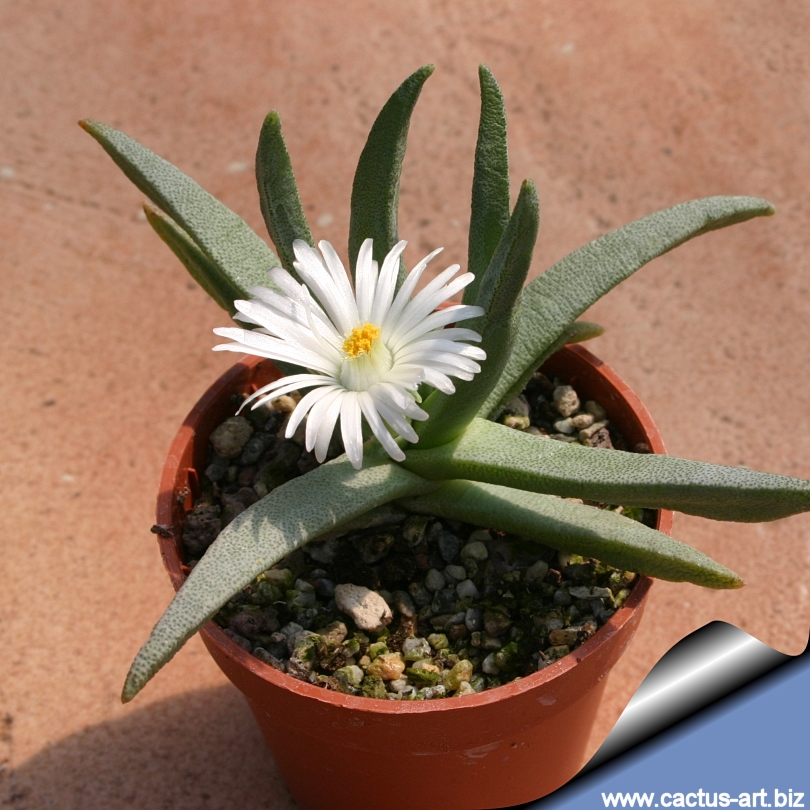
A slow growing mesemb with thin bluish leaves that form clusters. It is
notable for its spring show of long-lasting bright white or pink
flowers.
|
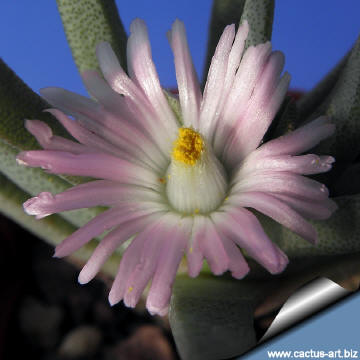 |
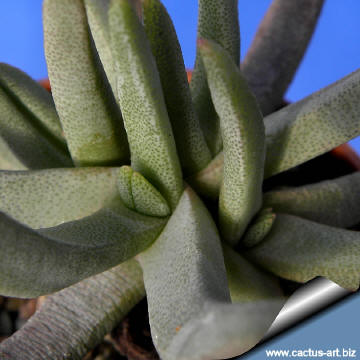 |
|
|
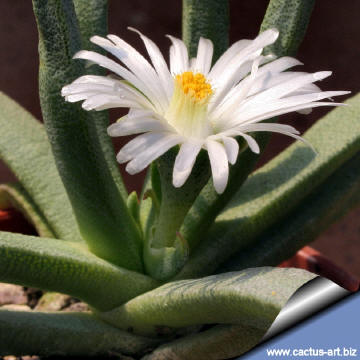 |
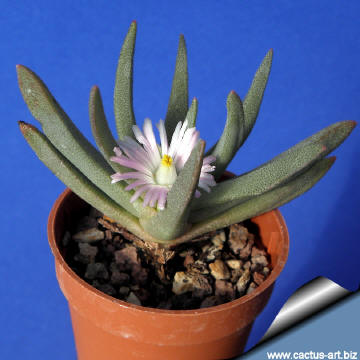
|
|
|
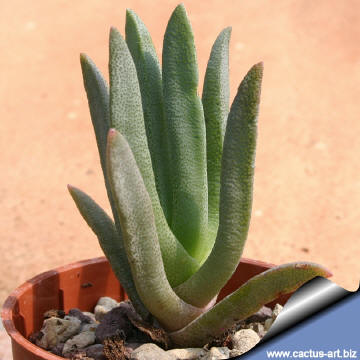 |
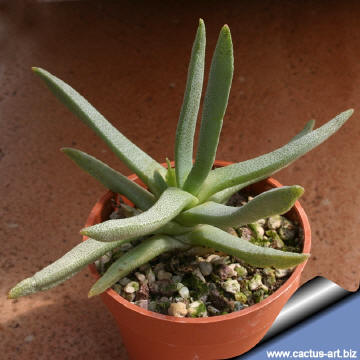 |
|
The leaves arrangement is variable, some specimen have densely
packaged leaves while on the opposite extreme some other plants
have
spreading and almost horizontal leaves. |
|
Advertising
|
|
|
|
.
|
|
|
Family: Mesebrianthemaceae (Aizoaceae)
Scientific name: Ebracteola wilmaniae (L.Bolus)
H.F.Glen
Origin: It is endemic to few sites in the Northern
Cape amd Vredenfort, South Africa.
Habitat: Grows in grass land among
sandstone rocks, in gravelly soil, often in pockets on rocks or or on
pans. Rainfall/year: 300-500 mm in summer. This species look
surprisingly like mesembs of the genus Hereroa that grow mixed together
the same area but with yellow flowers in late summer.
Conservation status: Listed in
CITES appendix 2.
Common Names include: Prince Albert Vygie.
Etymology: The genus name Ebracteola coms from the
Latin 'e, ex' = 'without, lacking' ;
and Latin 'bracteolae' = 'Bracteole' Hence
the the name indicate that the flowers posses no bracteoles, but it is
not so!
Synonyms:
- Mesembryanthemum vermeuleniae
L.Bolus 1922Ruschia wilmaniae (L.Bolus) L.Bolus 1929
- Ruschia wilmaniae var. angustifolia
L.Bolus 1954
- Ruschia wilmaniae var. vermeuleniae
(L.Bolus) L.Bolus 1929
- Mesembryanthemum wilmaniae
L.Bolus 1916
|
|
Description: Ebracteola wilmaniae is a compact highly
branched succulent with a thickened storage root stock. It will form a
dense mat with age.
Leaves: Fleshy organized in
2-6 pairs in each branch, smooth, light grey to bluish, trigonus
narrowing toward the apiculate apex, keel ± oblique. Every year a
few new leaves grow from the central stem.
Roots: Well developed, thickened tap-root.
Flowers: Daisy-like, organized in groups (cymes) of 1 to 3, but
usually solitary, 20-30 mm in diameter, petals pure white to dark-pink
with a white base, 1(-3) bracteolate. Filamentous staminodes white
surrounding the stamens in a central cone. Stamens filament white,
anthers yellow.
Blooming season: The long lasing
flowers appears in spring.
Fruits: Dark-brown capsules, usually singles, bracteolates, base
semi-globular with convex sides. Persisting for many year on the plants,
Seed: 0.9-1 mm long, 0.6-08 mm wide.
|
|
|
|
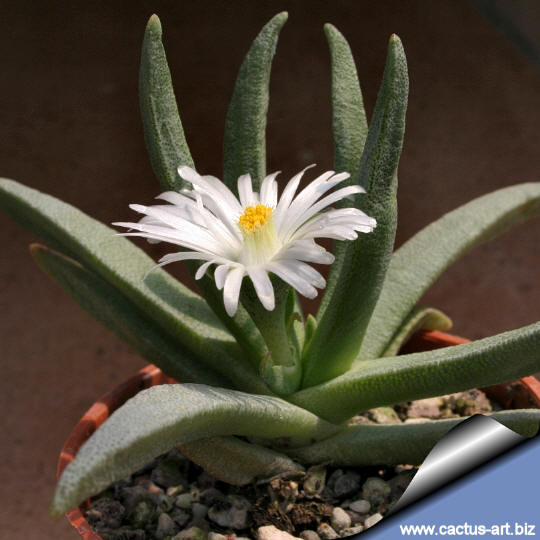
Cultivation: Ebracteola is easy to grow and
rewarding
plants than can be grown in pots or in the
rock-garden.. These plants grow on summer rain areas and were heading for
winter dormancy. They can be watered year-round,
water regularly from spring to Autumn but reduce watering frequency in
winter, growth period is early Spring to late Summer,
but is a very adaptable species that can grows opportunistically
whenever the water availability and growing condition are favourable. Keep
them cool, and half-shaded in summer,
need full sun or light shade on the other seasons. Potted
Ebracteola
look best in a heavy soil and the same is true for plants in a rockery.
Requires good drainage.
Frost Tolerance: quite frost hardy and grows best where there are
cold winters (it is reported to be hardy to at least
-10° C if very dry).
Propagation: Seeds, cuttings
Remarks: Ebracteola
has a gorgeous, thick root system and when it is potted up, the plant
can be progressively raised over the ground so that some of the roots
can be seen and is especially cultivated for their looks.
Architecturally it is a real stunner. When the "caudex" shape of the
raised roots is adequately in evidence this plant is incomparable. They
also tend to grow more "heads" when they are raised.

 |
|